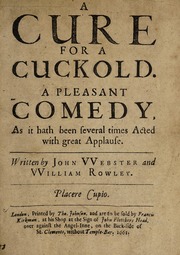I Don’t Speak German, Episode 27 – White Nationalism in the Pacific Northwest.
This week, Daniel talks to journalists Shane Burley and Alexander Reid Ross about white nationalism in the Pacific Northwest.
Content warnings.
This week, Daniel talks to journalists Shane Burley and Alexander Reid Ross about white nationalism in the Pacific Northwest.
Content warnings.
Way Down/When Doves Cry/Fayth (live, 2017)
Flash forward seven years.
Our protagonist has spent all of them working towards becoming a pop star. Her first serious effort in 1983, a recording session with Narada Michael Walden, who would go on to produce Whitney Houston on the soundtrack for The Bodyguard, produces neither anything of value nor anything that has made it into the public sphere, although lyrics including the chorus “give me the go/ and let me / rub you down /I’m in your power, when you’re / takin’ me down / I’ll just lay low until / you come around / good to go / rub down / good to go /rub down” suggest we’re not missing out. In 1984, she moved to LA, at first doing basically the same sorts of bar gigs she’d been doing in DC. In 1985, she cut a commercial for Kellogg’s short-lived Just Right cereal, where she’s cast as “the piano player who isn’t obviously supposed to look like Elton John.” That year, things finally began to coalesce. She met Steve Caton, a guitarist who will end up sticking with her through To Venus and Back, and ends up forming a band along with future Guns ’n Roses drummer Matt Sorum and a bassist, Brad Cobb. The group cuts a demo tape of five songs (the contents of which will be another Patreon-exclusive in a few months. Don’t worry, this won’t be a habit; the period of Amos’s career where we have a pile of extant demos that never went anywhere ends here).
The tape is sent to Atlantic Records under the name “Tori Ellen Amos and her band named Y Kant Tori Read,” (the name, apparently, is a reference to her frustrations at the Peabody with regards to sheet music) firmly positioning Amos as the project’s focal point, and is enough to net Amos a contract that she’ll spend the next fifteen years working her way out from under. The resulting project is a messy compromise. Amos had only reluctantly shifted gears into the band setup, writing home to her parents, “I have to accept that the girl and her piano are dead. That time in history is over.” And so she reinvented herself in the vein of 80s arena rock. Upon being signed, however, Amos found herself at the mercy of an over-involved label. The ten tracks of Y Kant Tori Read were ultimately recorded across six studios with a rotating cast of musicians. Sorum remained the drummer across all of it, but Caton was exiled to “additional guitars,” and was ultimately one of four guitarists on the album, while Cobb did not appear on it at all save for a cowriting credit on “Fayth.” Pulled in so many directions, the album ends up being a smorgasbord of 80s cliches, almost all of them a few years past their sell-by date. The largest and most obvious inspiration, however, was Pat Benatar, a fact made obvious in the hiring of Joe Chiccarelli, fresh off of work on Benatar’s 1985 album Seven the Hard Way, as producer.…
In the wake of recent dreadful events, Daniel decided to talk to Jack about the ideology of mass shootings, especially with reference to the ‘Might is Right’ tract cited by one of the killers.
Content warnings.
***
Show Notes:
“Might is Right” at RationalWiki: https://rationalwiki.org/wiki/Might_is_Right
“Might Is Right” full text at the Internet Archive: https://archive.org/details/cu31924029107907/page/n3
“Gilroy Garlic Festival Shooting,” at Wikipedia: https://en.wikipedia.org/wiki/Gilroy_Garlic_Festival_shooting
Santino William Legan: Gilroy Garlic Festival Shooter’s Instagram Page: “https://heavy.com/news/2019/07/santino-william-legan-gilroy-shooters-instagram/“
““Read ‘Might Is Right’ by Ragnar Redbeard,” Legan wrote. His caption further asked rhetorically, “Why overcrowd towns and pave more open space to make room for hordes of mestizos and Silicon Valley white twats?””
*
From Might Is Right, Chapter Three:
“You have only to look at some men, to know that they belong to an inferior breed. Take the Negro for example. His narrow cranial developittent, his prognathous jaw, his projecting lips, his wide nasal aperture, his simian disposition, his want of forethought, originality, and mental capacity: are all peculiarities strictly inferior. Similar language may be applied to the Chinaman, the Coolie, the Kanaka, the Jew, and to the rotten-boned city degenerates of Anglo- Saxondom: rich and poor. Vile indeed are the inhabitants of those noxious cattle kraals: London, Liverpool, New York, Chicago, New Orleans: and yet, in those places is heaped up, the golden plunder of the world.
[…]
“No one can study the laborers on a farm, the ‘hands’ in a big foundry or factory, the seamen in a large seaport, the nomadic hirelings on a railroad construction gang: or the clerks and salesmen in a city warehouse, without perceiving at a glance, that the vast majority of them are extremely poor specimens of humanity.
The ideal type of manhood or womanhood, (that is to say, ‘Ye Thoroughbred”) is not to be found among these captive hordes — for captives they really are. Their heads are, to a large extent unsymeterical- their features distorted, ape-like, unintelligent. Their bodies are out of all proportion, dwarfed, stunted, diseased, malformed, cretinous.
Their movements are contracted, artificial, ungainly, and their minds (outside of routine) are utter vacuums.”
*
“What We Know About the Gilroy Garlic Festival Shooting Suspect.” https://www.latimes.com/california/story/2019-07-29/what-we-know-about-gilroy-garlic-festival-shooting-suspect-santino-william-legan
“No clarity yet on motive behind Gilroy gunman’s attack, investigators say,” https://www.theguardian.com/us-news/2019/jul/30/gilroy-garlic-festival-shooting-california-white-supremacy-links
“The FBI is continuing to investigate if the alleged shooter “was in line with any particular ideology”, Craig Fair, a deputy special agent in charge with the FBI in San Francisco, said on Tuesday, including by reviewing social media accounts, digital media, conducting interviews and investigating what thoughts and ideas the shooter may have shared with others. He also did not confirm whether the widely-publicized Instagram account was linked to the shooter.”
“‘Erroneous reporting’ on Garlic Festival shooting suspect’s ideology: FBI” https://abcnews.go.com/Politics/erroneous-reporting-garlic-festival-shooting-suspects-ideology-fbi/story?id=64706955
“”I can tell you there has been no determination on ideology. There’s reports out there has been information found and books referenced on that, we are not in a position at this stage of the investigation to make a call on ideology,” John Bennett told reporters on Wednesday.…
 Baltimore (unreleased 1978 recording).
Baltimore (unreleased 1978 recording).
Like most pop artists, Tori Amos’s career has a vaguely embarrassing starting point. Fame comes slowly, and rarely on the first try, and most artists have some embarrassing recordings from their early efforts at success that are just waiting to be slapped up on YouTube or, in the case of “Baltimore,” tossed into VH1’s Before They Were Stars, a series dedicated to exactly this. The five minute segment in which this was publicly unearthed sticks mostly to a simplistic biography in which Amos’s piano bench gyrations in the “Crucify” video are juxtaposed with her upbringing as the daughter of a minister. The complexity of the story is acknowledged, but the underlying point is unequivocally rooted in teasing Amos for the naive innocence of her upbringing. “Baltimore” is introduced in a veering segue as the segment goes from the infamous image of Amos breastfeeding a pig in the Boys for Pele liner notes to her parents talking with rueful amusement about her love of shocking them, at which point the voiceover interrupts them to say “if you think that’s shocking…” as a leadup to Amos performing “Baltimore” on local television.
It’s cynical, more than slightly sexist, and ultimately effective, mostly because “Baltimore” is, at first glance, an absolutely ridiculous song, doubly so coming from Tori Amos. Its opening peel of morning show piano backed with a daydrinking hi-hat is utterly laughable in its twee insistence, and that’s before you get to the lyrics about how “the sun sets across the bay / I‘m glad to spend my day / in a working American city / with the people who made it that way.” Everyone knows exactly what this track is: a work of juvenile over-sincerity—a cloying love letter from a not-yet-world weary Tori Amos to her beloved hometown for a 1980 contest to pen a song for the Baltimore Orioles.
Virtually every part of this, however, is wrong. Let’s start with the notion that “in Baltimore / love is what you find,” as it is substantially more bathetic than many alternatives. Had Tori Amos written a jingle for her local baseball team in New York or Los Angeles, the sense of naive enthusiasm would still have been tangible, but the result would not have been ridiculous per se. Had she penned an ode to the Kansas City Royals or the Cincinatti Reds, it would have been slightly absurd, but in the sense of a disproportion between the song’s enthusiasm and the apparent cultural significance of the city. But with Baltimore she has a subject whose reputation is the polar opposite of the saccharine camaraderie she’s singing about.
The end effect is much like “Good Morning Baltimore,” the opening number of the 2002 musical adaptation of John Waters’s 1988 film Hairspray. In it, the main character, overweight but cheerful high school student Tracy Turnblad, wakes up and sings the praises of her city. But unlike “Baltimore,” “Good Morning Baltimore” is unequivocally playing with the irony of being so cheerful about Baltimore in particular, having Tracy sing about how “the rats on the street / all dance round my feet” and greeting “the flasher who lives next door” and “the bum on his barroom stool” as she goes to school, eventually missing the bus and hitching a ride on a garbage truck.…
This will be my last blog post to be crossposted to Eruditorum Press, as Elizabeth’s Tori Amos project, “Boys In Their Dresses,” will begin its  run on the site come Monday. In the meantime you can still follow me at katebushsongs.wordpress.com, or financially support me in exchange for exclusive writing and personal editing at my Patreon. I am literal days from moving out of my current apartment and haven’t found an affordable replacement, so my partner and I could really use your help. Thanks so much for reading. It means the world to me.
run on the site come Monday. In the meantime you can still follow me at katebushsongs.wordpress.com, or financially support me in exchange for exclusive writing and personal editing at my Patreon. I am literal days from moving out of my current apartment and haven’t found an affordable replacement, so my partner and I could really use your help. Thanks so much for reading. It means the world to me.
Numerous times on this blog we’ve talked about Kate, Bush’s classic 1979 Christmas special. As one of the few extended performances of her music Bush has done, and the only one made for television, it documents some of her less performed songs. While the bulk of Kate’s setlist was played on the Tour of Life, with the exceptions of Peter Gabriel’s contributions and a couple of Never for Ever songs, the BBC’s style of “televised theatre” differs from the musical theater Bush spent the tour performing. 20th century BBC shows were often boxed into a single room of a studio, and wholeheartedly embraced their limits by emphasizing their producedness, operating as filmed theater. Bush capitalized on the theatrical aspect of TV, particularly in her early career, relying more on costuming and mime than special effects and cinematographic precocity. Most of the songs performed in the Christmas special have visual counterparts from Bush or Gabriel elsewhere, barring “Another Day,” but we’ll leave that post to itself. The other exception, “Ran Tan Waltz,” is a B-side, an eccentric piece of smut that would have made de Sade drool.
“Ran Tan Waltz” has one of the strangest videos of Bush’s career. It’s a three-dancers-on-one-stage setup that’s not atypical of Bush in this era, but the costuming tips it into what-the-fuck-are-we-looking-at territory. Bush is decked out in Tevye-like garb, boasting a chinbeard, waistcoat, and bare feet, an exemplary sample of how middle-class English girls think the working class looks (à la some cabaret). To her left and right are dancers Stewart Avon Arnold and Gary Hurst dressed respectively as an upper class woman in purple and, I swear to God I am not making this up, a fucking baby in a diaper. Kate Bush has made a music video that’s a weird mix of cabaret, Victoriana, early 20th-century Russo-Jewish musical theater, and AB/DL. In a BBC Christmas special. Having written these last two sentences, I shall now retire Dreams of Orgonon and languish in obscurity.
Alas, if every blogger who covered BBC television from the Seventies quit after seeing things like diaper men, there’d be a complete deficit of media criticism about this era. So umm… yeah, “Ran Tan Waltz,” the song and the video, has a lot going on. Normally we could contextualize the substance of a video with its song, but really, how do you get Tevye and diaper fetishes out of a song like this?…
 So, my next blog project, starting on Monday August 5th, is Boys in their Dresses: A Psychodiscography of Tori Amos. And I wanted to start by talking a little bit about why this project interests me, and also a little bit about my short to medium term blogging plans in general.
So, my next blog project, starting on Monday August 5th, is Boys in their Dresses: A Psychodiscography of Tori Amos. And I wanted to start by talking a little bit about why this project interests me, and also a little bit about my short to medium term blogging plans in general.
I’ve had in mind to do some sort of piece about the largely female-fronted pop music I enjoyed during my 90s adolescence and how my understanding of my own love of it has shifted since transition. I originally imagined it as a series of essays, but eventually I got the idea of instead doing a deep dive on Tori Amos. The song by song blog has become, I think, one of the real classic structures of long-form blogging, and it seemed like an interesting thing to put my own spin on. And Tori Amos seemed a compelling structure for that—an artist who keeps trying new things and by extension keeps allowing for new perspectives on her work, and who has a sense of visionary personal mythology that appealed to me for all the reasons you’d expect it to.
But mostly I want to understand the sense of awe and possibility I felt at fifteen when I slipped a copy of Little Earthquakes into my Discman and put on headphones. It was an initiation to a world and landscape that I hadn’t known existed, but that felt more real and immediate than anything I’d known up to that point. Some of that, I know now, was dysphoria. But some of it—more of it, I think—was Amos, severe, brilliant, and mysterious, and the specific magic that her songs work. So off we go on a song by song blog, picking apart her career.
This blog will run on an erratic but frequent schedule. There will be posts every Monday, but they may be shorter than you’re used to depending on the song, and there may be posts elsewhere in the week as well. (Not to worry about the one on the 5th—it’s a nice meaty 3500 words.) If you’re not familiar with the music of Tori Amos, there’ll be links in every post, though the structure of a song by song blog means that we start with some slightly dodgy early material, so to get a taste of what we’re actually talking about you might want to go check out… oh let’s say Boys for Pele. Though if you want to get a sense of it in one song, check out “Precious Things” off of Little Earthquakes.
The plan is for it to occupy the weekly slot of the blog for the foreseeable, with possible interludes for short-run projects. Once I finish the last five chapters of Last War in Albion v2 (which I’m not touching til I get Eruditorum v7 finished) I’ll start considering that for the weekly slot as well, and it’ll become more likely that I’ll alternate runs of the two. Unless, of course, I get bored or have some other brilliant idea or whatever.…
In a fun episode, Daniel chats with CV Vitolo-Haddad about CV’s recent debate with Eric Striker.
Content warnings.
The Striker/CV debate: https://www.youtube.com/watch?v=UAm3qijUWUk&t=5073s
Eric Striker dox from the SPLC: https://www.splcenter.org/hatewatch/2019/05/01/prolific-alt-right-propagandists-identity-confirmed
Eric Striker (@AarickStriger) complains about snitches. Which are really just people Striker is frightened of. https://twitter.com/AarickStriger/status/1153503065649176576
…
 |
| In 2063 they should do a special in which they cast different actors as William Hartnell, Richard Hurndall, and David Bradley, then have them all appear together in an adventure called The Three First Doctors. |
It’s December 25th, 2017. Ed Sheeran is at number one with “Perfect.” The Pogues, Mariah Carey, Wham, and Eminem also chart, one of them with Ed Sheeran appearing on the track. We’ll call this an exercise for the reader. In news since Series Ten wrapped up, neo-Nazis held a rally in Charlottesville, Virginia that resulted in the death of a counterprotester, Heather Heyer, when a Nazi deliberately drove his car into a crowd. Following the rally, President Trump praised the “very fine people” on both sides of the “are black people human” issue. There’s a lot of other Trump bullshit, but honestly summarizing six months of it in a paragraph is a challenge, so let’s just leave that at “also more fascism” and call it a day. Martin Shkreli is found guilty of a variety of crimes including disrespecting the Wu-Tang Clan. Vince Cable becomes leader of the Liberal Democrats. Theresa May’s government promises that Parliament will get a vote on any Brexit deal. Fifty-eight people are killed at a concert in Las Vegas when a gunman opens fire from an overlooking hotel window. Disney announces its impending acquisition of 21st Century Fox, delighting Marvel fans who don’t give a shit about growing corporate control of the media landscape, which is to say Marvel fans. Also, I start transitioning, which isn’t exactly news, but given the autobiographical strand of this project seems worth mentioning.
On television, meanwhile, the Moffat era ends how a lot of people would expect: an undisciplined and messy story long on misplaced confidence and casual sexism. That the people who expected this were mostly wrong about the entire rest of the era is ironic, but does not change the underlying matter here. It’s not that Twice Upon a Time is bad; merely that it isn’t great. It’s not a triumphant final statement of any of the eras that it closes, instead coming off as sort of line one of those decent but clearly extraneous bonus tracks that get put at the end of album rereleases and end up vaguely diminishing the album’s close. It would have been a better ending for the Capaldi era had it closed with a slightly longer World Enough and Time/The Doctor Falls that found time for a regeneration speech. Not, again, because this is a bad story, but simply because that was an emphatic statement and this is a pleasant mess.
This is not a surprising, given that it’s the second extension of the Moffat/Capaldi era that we’ve had. After being persuaded to stay one more season after his “could be my last” Husbands of River Song, Moffat discovered that Chibnall did not wish to kick off his tenure with a Christmas episode, and so agreed to figure out his third way of departing the series in two years.…
CW: child sexual abuse. 
Another Day
Another Day (Bush/Gabriel)
We must address some important facts in this blog post. For starters, folk musician Roy Harper is a songwriter of note. He’s got solid and interesting work in his discography, bits of which get covers by remarkable artists like the Cocteau Twins or, as this post demonstrates, Kate Bush and Peter Gabriel. It’s intuitive that Bush and Gabriel would choose to duet on a cover of “Another Day”; an sturdy and compelling break-up song, whose themes of wistfulness and the cognitive dissonance of desire overlap with both artists’ interests. The Harper album “Another Day” hails from, Flat Baroque and Berserk, has songs that are the equal of mid-tier tracks from Joni Mitchell’s Blue, Bob Dylan’s Bringing It All Back Home, or Dave Carter and Tracy Grammer’s Flowers of Avalon. Harper’s work is firmly second-tier folk music, respectable but not transcendent. Given that he’s a direct influence on Led Zeppelin, Pink Floyd (with whom he cut a lead vocal on “Have a Cigar”), and Pete Townshend, he’s clearly a figure with some relevance to both rock and folk music and a force to be reckoned with.
The other thing we need to address in this blog post is the revelations about Roy Harper that have been made over the years. He is the subject of child sexual abuse allegations by two women, who were 11 and 16 at the time the abuse occurred. These women, who have chosen to be anonymous, have recounted their trauma in accounts too harrowing to quote on this blog but which can be read here. As is typical of these cases, Harper was cleared of these charges in 2015 and served no prison time. Any discussion of Harper must at least acknowledge the violence he’s committed against these women, and that he effectively ruined their lives.
It’s not often when relating the story of Kate Bush that I have to talk about things like this. Most figures in this narrative aren’t actively monstrous, although we’ll talk about Rolf Harris in time. But in the era of #MeToo, it’s vital that we talk about the violence committed by influential persons. When you write about Roy Harper, you can’t simply stop at saying Flat Baroque and Berserk is pretty good. While the objective quality of his work isn’t diminished by his actions, what he’s made is necessarily tainted by his crimes. The fact that these songs were written by a rapist has them in the same way that the revelations about Louis CK and Kevin Spacey have affected their work.
Harper is also influential enough that in 1979, “Another Day” was covered on TV by two popular artists. Bush and Gabriel covered it on Bush’s BBC Christmas special, “Kate,” the most gonzo thing the BBC has aired that’s not The Web Planet. It’s an eclectic piece of stage theater that serves as a 45-minute sampler of the Tour of Life as well as a warm-up for Never for Ever.…
 The long awaited (by a small number of people with extremely good taste) return of the Shabcast. I chat with Kit Power about his new books, a non-fiction book about the movie Tommy and, more particularly, his new novella The Finite.
The long awaited (by a small number of people with extremely good taste) return of the Shabcast. I chat with Kit Power about his new books, a non-fiction book about the movie Tommy and, more particularly, his new novella The Finite.
Instantly one of my personal favourite ever Shabcasts.
Mild content warnings and spoilers
*
Show Notes:
The Finite from Black Shuck Books
Kit’s previous books Godbomb and A Warning…
Kit’s column ‘My Life in Horror’ at Ginger Nuts of Horror, via his recent piece on Where The Wind Blows
Discussion between George Daniel Lea, Laura Mauro, and Kit on Where The Wind Blows
Kit guests on an episode of They Must Be Destroyed on Sight! talking about Tommy (and Parents)
Wrong With Authority Footnote episode on George Romero movies Martin and The Crazies, featuring Kit and Daniel Harper
…